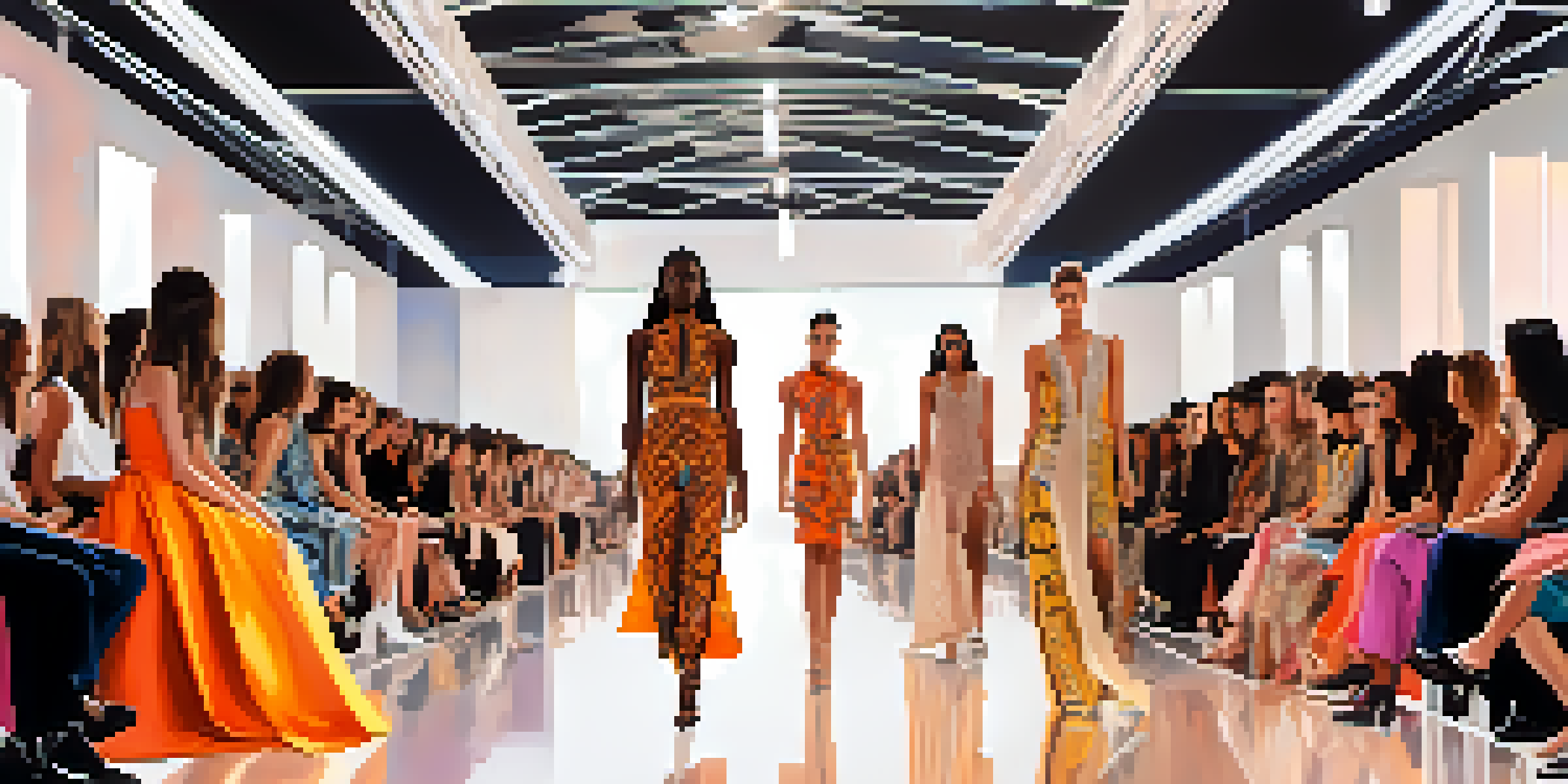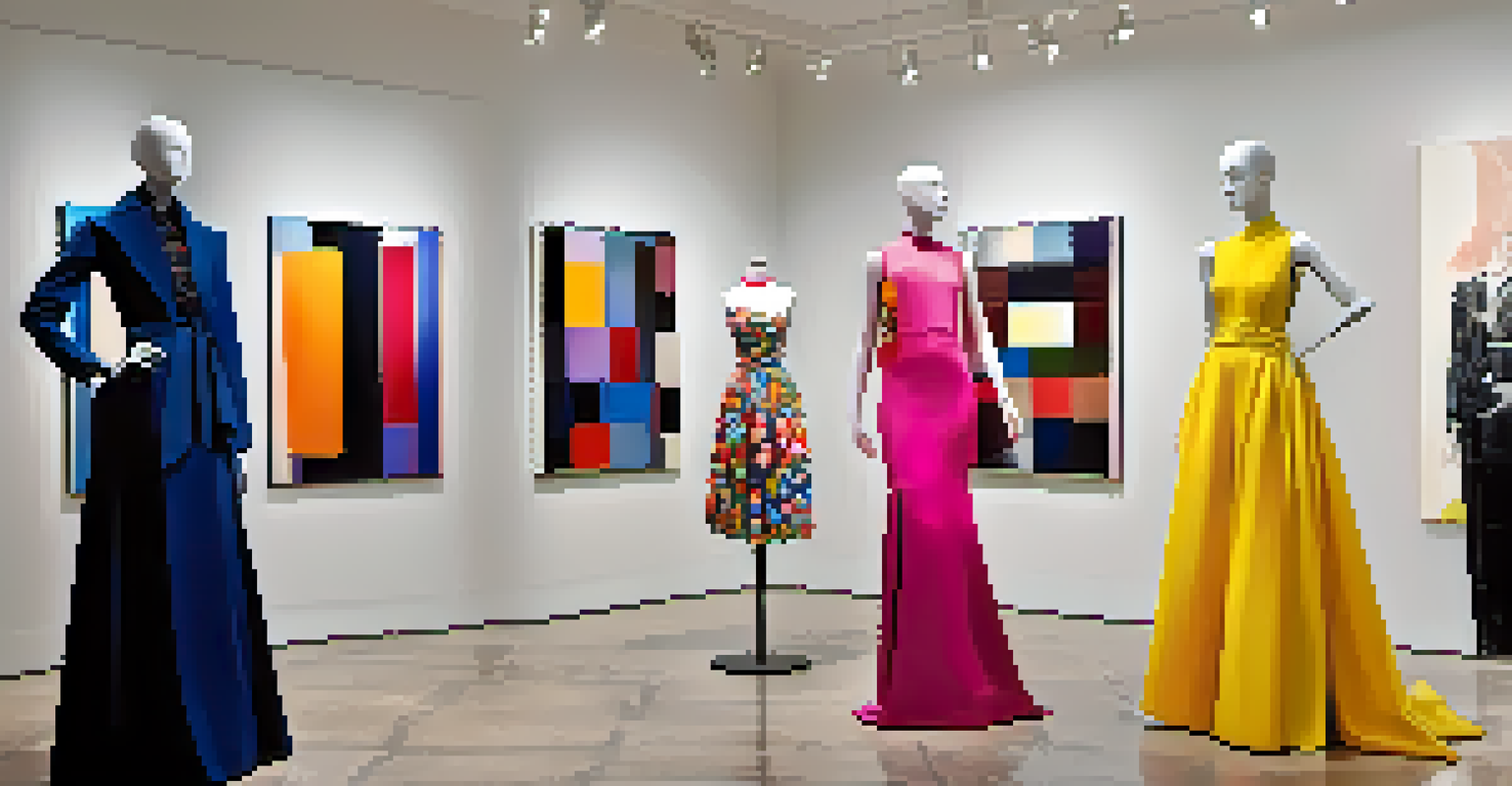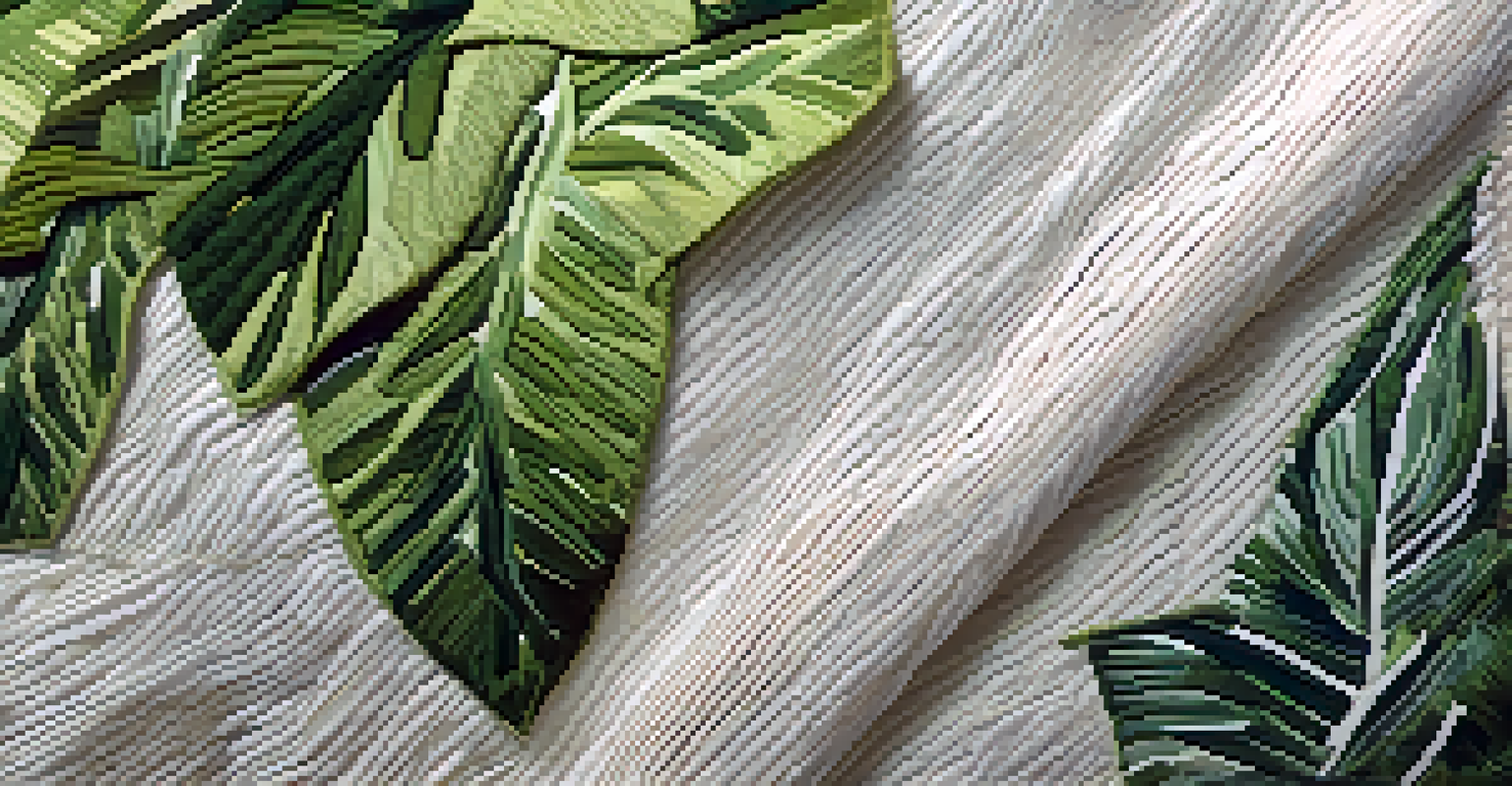The Cultural Impact of Luxury Fashion Icons Worldwide

Defining Luxury Fashion Icons: More than Just Style
Luxury fashion icons are not merely about high-priced clothing; they represent a unique blend of artistry, craftsmanship, and cultural significance. These individuals often become symbols of aspiration, influencing not only fashion trends but also lifestyle choices. For instance, figures like Coco Chanel and Karl Lagerfeld have transcended their brands, becoming cultural icons in their own right.
Fashion is the armor to survive the reality of everyday life.
Their influence often extends beyond the runway, impacting music, art, and even politics. When you think of luxury fashion, names like Gucci or Louis Vuitton come to mind; but it's their ambassadors—celebrities, designers, and influencers—who truly embody and amplify the brand's narrative. This interplay between fashion and culture creates a dynamic relationship that shapes societal norms and values.
Moreover, the power of social media has further amplified their reach, allowing luxury fashion icons to engage directly with a global audience. This direct communication helps cultivate a community around the brand, making it more than just a label but a lifestyle choice that resonates with many.
The Role of Celebrity in Shaping Fashion Trends
Celebrities play a pivotal role in defining and popularizing luxury fashion. When a high-profile star steps out in a designer outfit, it often leads to a surge in demand for that item, demonstrating the strong connection between celebrity culture and fashion trends. A classic example is Rihanna, who has made headlines not just for her music but also for her bold fashion choices that inspire countless fans.

This influence is particularly evident during prestigious events like the Met Gala, where celebrities showcase avant-garde designs that challenge traditional fashion norms. The buzz generated from these appearances often filters down to mainstream fashion, encouraging everyday consumers to adopt similar styles. Essentially, what celebrities wear can dictate what's 'in' and what's 'out'.
Luxury Icons Reflect Cultural Values
Luxury fashion icons not only set trends but also embody and influence societal values and changes.
Moreover, the fashion industry recognizes this power, often collaborating with celebrities to launch exclusive collections or campaigns. These partnerships not only boost sales but also help brands stay relevant in an ever-changing market, proving that celebrity influence is a powerful tool in luxury fashion.
Cultural Significance: Fashion as a Reflection of Society
Luxury fashion often serves as a mirror reflecting societal values and changes. For example, during times of social upheaval, fashion can embody a sense of rebellion or unity. The rise of brands like Off-White and Balenciaga reflects a shift towards streetwear, highlighting a cultural movement that embraces diversity and inclusivity in fashion.
Sustainability is not a trend; it is an essential part of our future.
Additionally, fashion can be a platform for social commentary. Designers like Vivienne Westwood and Jean-Paul Gaultier have used their collections to address pressing issues such as climate change and gender identity. This ability to weave important messages into fashion creates a dialogue between the luxury industry and the public, fostering a deeper understanding of contemporary issues.
Ultimately, the cultural significance of luxury fashion icons lies in their ability to provoke thought and inspire action. By challenging norms and pushing boundaries, they encourage society to reflect on its values and aspirations, making fashion a powerful vehicle for change.
Globalization and the Spread of Luxury Fashion
The globalization of luxury fashion has led to a fascinating fusion of cultures. As brands expand into new markets, they often adapt their designs to resonate with local aesthetics and traditions. This not only enhances brand appeal but also celebrates cultural diversity, creating a richer fashion landscape worldwide.
For instance, brands like Dior have incorporated traditional Asian motifs into their collections to connect with consumers in that region. This blending of styles not only respects cultural heritage but also promotes a sense of global identity. As a result, luxury fashion becomes a collaborative tapestry that showcases the beauty of cross-cultural exchange.
Sustainability is the New Luxury
The luxury fashion industry is increasingly prioritizing sustainability, aligning with modern consumer values and ethical practices.
Moreover, globalization has made luxury fashion more accessible to a broader audience. With the rise of e-commerce, consumers from different backgrounds can engage with luxury brands, allowing them to express their individuality through high-fashion pieces. This democratization of luxury fashion fosters a sense of belonging and community among diverse consumers.
Sustainability: A New Era for Luxury Fashion Icons
In recent years, the luxury fashion industry has faced increasing scrutiny regarding sustainability. Environmental concerns and ethical practices are now at the forefront, prompting luxury fashion icons to adopt more responsible approaches. Brands like Stella McCartney have led the charge, proving that luxury can coexist with sustainability.
This shift is not just a trend; it's a reflection of changing consumer values. Modern consumers, especially younger generations, prioritize brands that align with their beliefs, seeking transparency and accountability. As a result, luxury fashion icons are now using their influence to advocate for sustainable practices, driving change within the industry.
By embracing sustainability, luxury fashion icons are redefining what it means to be fashionable. They are not just selling products; they are promoting a lifestyle that values quality over quantity, encouraging consumers to invest in timeless pieces rather than fleeting trends. This new narrative reshapes the luxury fashion landscape, making it more responsible and ethically sound.
The Intersection of Art and Fashion in Luxury Brands
Luxury fashion often intersects with the world of art, creating a unique synergy that enhances both fields. Many designers collaborate with renowned artists to create limited-edition pieces that elevate fashion to an art form. This not only attracts art enthusiasts but also brings a fresh perspective to the runway, making fashion shows more like art exhibitions.
For example, the collaboration between Louis Vuitton and contemporary artist Yayoi Kusama resulted in a collection that merged Kusama's iconic polka dots with the brand's classic designs. Such partnerships not only generate buzz but also highlight the creativity and innovation present in luxury fashion. They challenge the notion of fashion as purely commercial, positioning it as a form of artistic expression.
Art and Fashion: A Creative Fusion
Collaborations between luxury fashion brands and artists elevate fashion to an art form, enriching both industries.
Additionally, this intersection allows luxury brands to appeal to a wider audience. By infusing art into their collections, they attract consumers who appreciate both fashion and art, fostering a deeper connection between the two. Ultimately, this blend enriches the cultural landscape, showcasing the power of creativity in shaping luxury fashion.
The Future of Luxury Fashion Icons in a Changing World
As we look to the future, luxury fashion icons will continue to evolve alongside societal changes and technological advancements. The rise of digital platforms and virtual reality is reshaping the way consumers interact with fashion, creating new avenues for luxury brands to connect with their audience. In this digital age, influencers and online personalities are becoming the new icons, often redefining what luxury means.
Moreover, the focus on inclusivity and diversity is likely to gain even more prominence. As consumers demand representation in fashion, luxury brands will be challenged to reflect a broader spectrum of identities and experiences. This shift will not only enhance authenticity but also foster a more inclusive fashion industry that celebrates individuality.

Ultimately, the future of luxury fashion icons lies in their ability to adapt and respond to cultural shifts. By embracing change and prioritizing sustainability, authenticity, and inclusivity, they can continue to inspire and influence generations to come, ensuring that luxury fashion remains relevant and impactful in an ever-changing world.